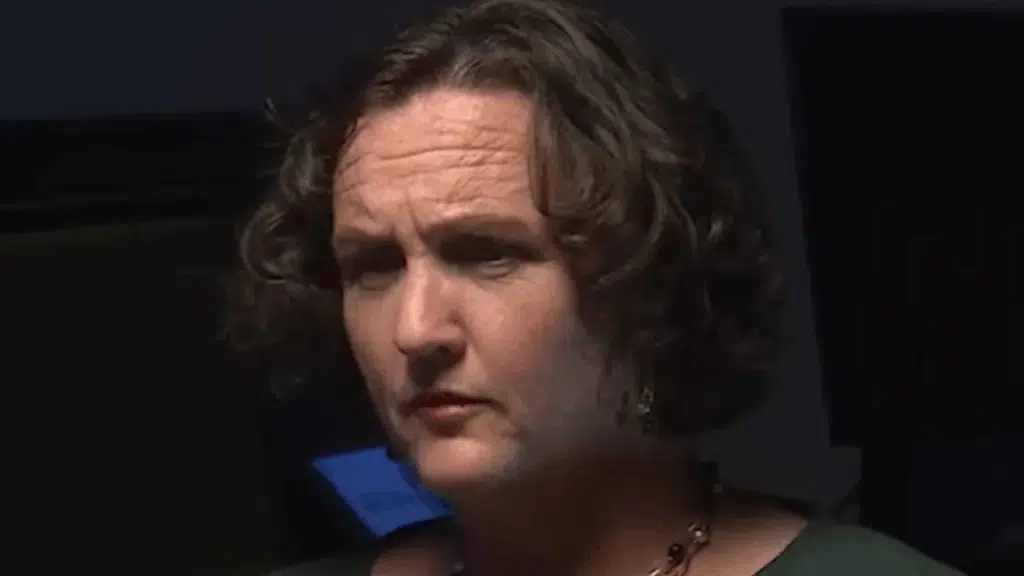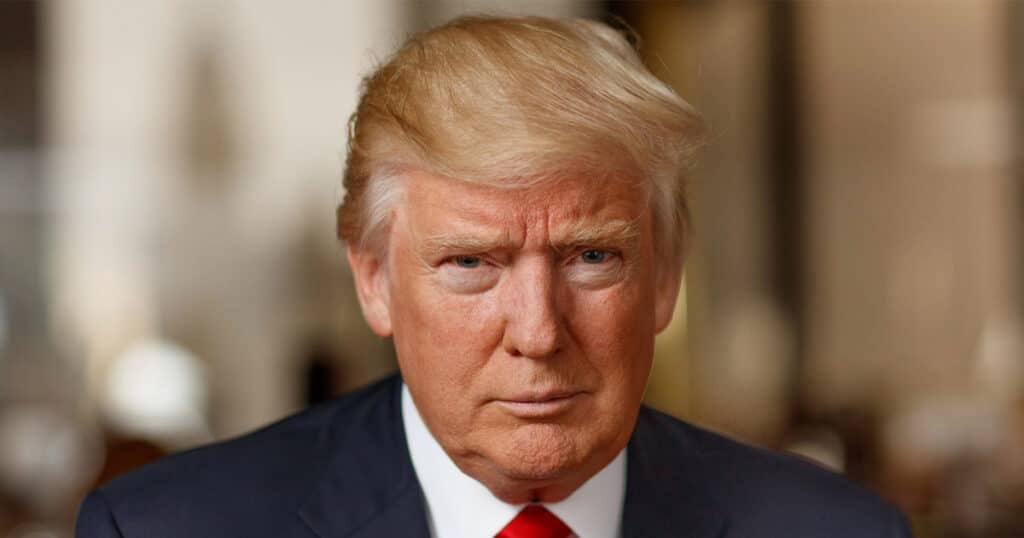
Exclusive: Trump Admin Plans Overhaul of Endangered Species Act
The Trump administration intends to overhaul the Endangered Species Act by changing what it means to harm an endangered or threatened species as part of the larger White House campaign to spur economic growth through deregulation, RealClearPolitics is first to report.
The president has long loathed red tape of the green variety, and one White House official predicted that overhauling the act “will have a seismic, real-world effect on the ability to build.”
“Environmental is the biggest tool for stopping growth,” Trump said during an interview with Joe Rogan last October, harking back to his New York days as a real estate developer and complaining that rare flora and fauna on a job site could quickly grind even the biggest construction projects to a halt. The candidate called environmental regulations “a weapon,” and later as president-elect, he vowed to expedite the environmental permit and approval process for any company investing at least $1 billion in the United States. Wrote Trump on Truth Social last December, “GET READY TO ROCK!!!”
Trump has slashed and burned his way through much of the regulatory regime of his predecessor already, rescinding nearly 80 Biden-era climate-related orders during his first day in office alone. Overhauling the ESA would easily eclipse those efforts, changing the regulatory, and perhaps natural, landscape forever.
The proposed reform must still make its way through the federal rule-making process. Legal challenges are almost certain to follow, although a conservative Supreme Court may not be sympathetic.
Sweeping change would follow from redefining a single word: harm.
While the plain text of the Nixon-era law prohibits the harming of endangered species, regulatory agencies have taken an expansive view that also prohibits modifying or degrading habitats where wildlife resides. The subsequent regulation has bedeviled conservatives and industry alike for decades. But now the administration intends to define “harm” as an attempt to “take” an endangered species, that is, “to harass, harm, pursue, hunt, shoot, wound, kill, trap, capture, or collect” the animal itself.
For instance, hunting the northern spotted owl would remain illegal under the new rule; building a home or logging timber in a habitat where that bird is known to roost likely would not.
The example isn’t incidental. The rule change runs to the heart of a longstanding debate over how the act ought to apply to private property. When the owl in question was listed as a threatened species in 1990, the federal government placed millions of acres in the Pacific Northwest off limits. Logging companies filed suit. The high court ruled against them.
And environmentalists rejoiced in the victory. They had likened the alternative – protecting wildlife without regulating private land – to playing the piano “with just the black keys.” But writing for the dissent, Justice Antonin Scalia warned that an expansive definition of harm expanded the regulation’s reach and “imposes unfairness to the point of financial ruin,” not just upon businesses “but upon the simplest farmer who finds his land conscripted to national zoological use.”
Conservatives insist that Scalia could see into the future. In the wake of that landmark case, Babbitt v. Sweet Home Chapter of Communities for a Great Oregon, the right argues that environmentalists and government agencies didn’t focus on bringing endangered species back from the brink so much as the left used the act to expand their power at the expense of industry. “Left-wing activists love the status quo,” complained one Trump official, “because it stops development, stops growth, and hurts the economy.”
“The groups use endangered species, sometimes ones that aren’t actually endangered at all, as a fig leaf to stop all growth,” the official added. “And they do the same with ludicrous arguments that habitat will be impacted, to halt development and kill the economy.”
The White House doesn’t have to look far for environmental activism allegedly dressed up as conservation. Consider the snail darter.
The little freshwater fish swims in Eastern Tennessee rivers and was listed as endangered in 1973, a designation that halted construction of the Tellico Dam. The only problem? Scientists now say it does not exist. “There is, technically, no snail darter,” Thomas Near, curator of ichthyology at the Yale Peabody Museum and a professor at that university’s fish biology lab, told The New York Times.
Opponents of the dam insisted that the two-inch nonedible fish was a distinct species and successfully used its protected status to stop construction. Decades later, Near and other scientists concluded that the snail darter is no different than another unremarkable and very much not endangered fish, the stargazing darter. It is Exhibit A, the professor told the Times, of “the ‘conservation species concept,’ where people are going to decide a species should be distinct because it will have a downstream conservation implication.”
The Tellico Dam began operating in 1979, but not until after a protracted legal fight and a special exemption signed into law that same year by President Jimmy Carter. The fish population, meanwhile, thrives. Other examples abound for the right.
There is the endangered dusky gopher frog. The Obama administration designated 1,500 acres of private land in Louisiana as a “critical habitat” for the shy frog even though the reptile was only known to inhabit wetlands in southern Mississippi.
Then there was the Johnston’s frankenia, a blueish-gray shrub that enjoyed protected status for decades until 2003 when the U.S. Fish and Wildlife Service deemed its population had recovered. Conservatives complain that the government didn’t remove the designation until 2016.
More recently, a rare buckwheat gave the Biden administration fits. Though one of over 300 varieties, Tiehm’s buckwheat grows only near lithium and boron deposits, an inconvenient horticultural headache for industries eager to mine those minerals critical for electric vehicle batteries. The flowering plant earned endangered status in 2022.
Nothing quite draws the ire of Trump like the Delta smelt. He has been at war with little fish for as long as he has been in politics. Though functionally extinct, the president blames the four-inch fish, once common in the Sacramento-San Joaquin Delta, for allowing an environmentalism run wild. He has blamed the water woes of California on misguided efforts to “protect an essentially worthless fish.”
The administration will likely have a free hand as they seek to overhaul the Endangered Species Act. In the 1995 Babbitt decision, the Supreme Court relied on the so-called Chevron deference. When Congress has not addressed a question directly, the high court, per that doctrine, was expected to follow a federal agency’s interpretation of a given statute. In Babbitt, the Supreme Court adopted the expansive regulatory definition of harm set forth by the Fish and Wildlife Service.
Fast forward 30 years, and Chevron is no more. The Supreme Court overruled it last summer when Chief Justice John Roberts ruled the doctrine “fundamentally misguided.”
Environmental advocates have been bracing for a deregulatory onslaught since the moment Trump won reelection. According to Noah Greenwald, director of the Center for Biological Diversity, redefining what amounts to a “harm” is the “first step toward stripping habitat protections from rare plants and animals headed toward extinction.” He called it nothing less than “a death sentence.”
“The Trump administration has been systematically killing protections for our air, water, wildlife and climate like a vicious cancer,” Greenwald said last week. “The malignant greed driving these policies threatens to greatly increase destruction of the natural world and turbocharge the extinction crisis.”
EPA Administrator Lee Zeldin said during his Senate confirmation hearing earlier this year that he believes “we have a moral responsibility to be good stewards of our environment for generations to come.” Speaking for the administration, he added, however, that “common-sense” environmental regulations were possible “without suffocating the economy.”
This article was originally published by RealClearPolitics and made available via RealClearWire.


